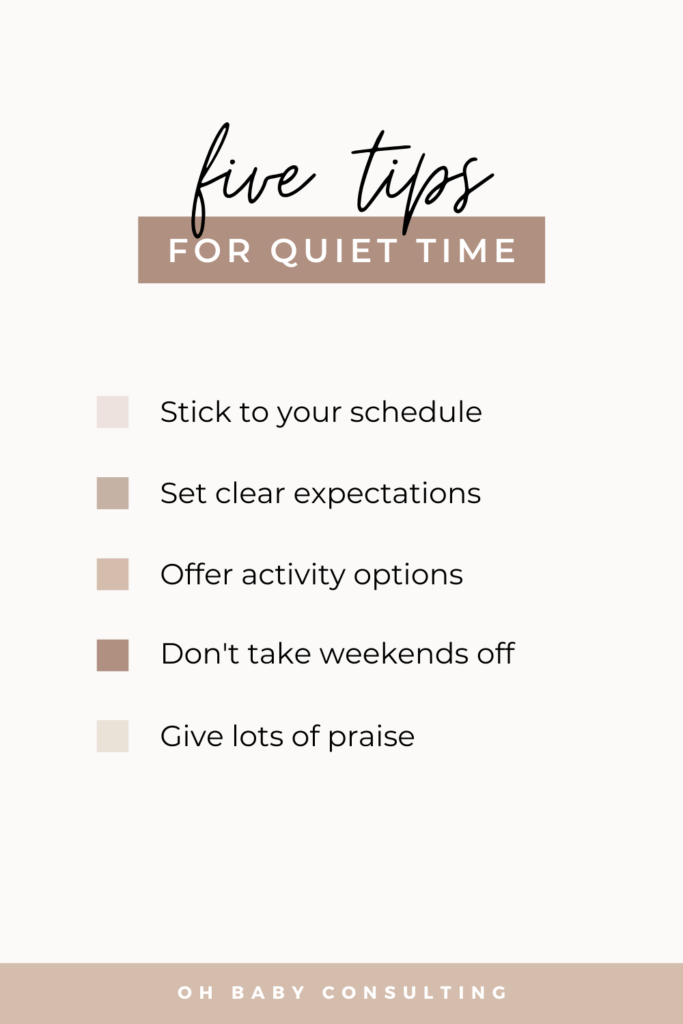The end of naps is a sad time for many parents. Nap time is usually the one and only time of the day you can actually think and be productive without a tiny helper attached to your hip or being way too quiet in the other room.
But I’ve got some great news for you: you don’t have to say goodbye to your hour of midday peace just yet! Because in lieu of a nap, I highly recommend introducing quiet time into your daily routine. Not only is this going to give you a much-needed break from your little one, but it’s going to give their brain and body a much needed break as well. This is going to go a long way in reducing afternoon meltdowns (from you both!)
Here are my top 5 tips for introducing a quiet time.
[This post contains some affiliate links but all product recommendations and opinions are my own. If you use these links to buy something, I may earn a small commission which in turn supports my work.]
1. Stick to your schedule
Quiet time should ideally happen during your child’s normal nap time. Usually, this falls right after lunchtime around 12:30 or 1pm. By keeping it at consistently the same time every day, you can reduce the typical toddler pushback and negotiations (for the most part.)
2. Set clear expectations ahead of time
When you first introduce quiet time, make sure your toddler knows exactly what to expect. For example, lay the ground-rules simply and clearly. “It’s time for a rest. You don’t have to sleep, but you do have to play quietly in your room.”
I also recommend using a toddler clock as a physical reminder of when quiet time starts and ends. I love the Hatch and the Little Hippo Mella Ready to Rise, but any version of an Ok to Wake clock will work well. Set it to change colors after 1 hour at which time your toddler can come out of their room and quiet time will end. Not only will this help set clear boundaries around quiet time, but you can use it to your advantage at bedtime as well.
3. Offer options for quiet-time activities
To minimize confusion or uncertainty, give your child a few options of calm activities to do independently in their room (dolls, books, blocks, puzzles, etc.) Try to avoid offering electronics since this is supposed to be a “brain break.” I love the Toddler Play Kits by Lovevery!
4. Don’t take weekends off
This might not be possible every weekend, but as much as you can, try to maintain your normal daily schedule all 7 days of the week. Even though your toddler is no longer napping, having an hour of quiet time has a big invisible impact on their brains & bodies. To avoid overstimulation and epic meltdowns, taking an hour to “recharge the batteries” will make your Saturdays and Sundays much more pleasant.
5. Give lots of praise
After each quiet time (especially in the beginning) let your little one know how proud you are of them for playing quietly in their room. If your toddler likes to see evidence of their success, you can even set up a sticker chart for great quiet-time behavior. When the chart is full, plan a fun outing to do together.
While thinking about dropping naps altogether may put you in full-on panic mode, hopefully implementing daily quiet time will lessen the scariness and give everyone a much-needed break.














